Visit of the German Minister for the Environment, Steffi Lemke, to the Triglav National Park on the occasion of the 18th Alpine Conference in Brdo/Slovenia to discuss park management and nature conservation issues in the Alps with the Director of the Triglav National Park, Tit Potocnik, the Director of the Berchtesgaden National Park, Roland Baier, and the Director of ALPARC, Guido Plassmann.
The 10th edition of Youth at the Top was a complete success, bringing together around 350 young people in almost thirty locations in the Alps and the Carpathians on 18th and 19th July. The participants focused on the common theme "Alpine Flowers and Pollinating Insects".
A video is now available both on our website and on YouTube, showing the various activities of participants from all over the Alps in the Youth at the Top event 2024.
The next edition of Youth at the Top will take place on 17 July 2025 (or on another day during the week of 14-20 July) and will be a time of learning and discovery for young people around the common theme of "Our footprints in the Alps".
Click here for more information on Youth at the Top 2025!


The year 2025 began on a high note for the Alpine protected areas community with the 29th Danilo Re Memorial. This edition, perfectly organized by the Swiss National Park (CH) in collaboration with ALPARC, was a great success, marked by enthusiastic participation of the teams and memorable times spent together.
The Opening Day
The event kicked off on Thursday, January 16th, with the traditional and well-attended parade of teams. This year’s parade featured a special performance by the choir Cor dal Parc, setting a festive tone for the celebrations. Park delegations paraded through the picturesque streets of Scuol, culminating at the municipal house, where official greetings were delivered by local authorities and the ALPARC President Peter Oggier.
A particularly touching moment followed as Cor dal Parc performed Signore delle Cime in memory of Mauro Fissore, a colleague and friend who sadly passed away in 2024.
The evening continued with the popular Alpine Buffet at the municipal house. This annual tradition gave participants the chance to taste regional food from across the Alps while enjoying music, spontaneous dancing, and great friendship.
The General Assembly
Friday was an important day highlighted by the ALPARC General Assembly and a seminar for rangers. The morning session was dedicated to the General Assembly, the most important meeting of the year for the association. Highlights included the presentation of ALPARC's 2024 Activity Report and constructive discussions that confirmed the cohesion of ALPARC members. Key decisions, including the election of a new Board of Directors, were made with unanimous support.
In the afternoon, the Ranger Seminar provided an opportunity for park rangers to share experiences and initiatives from their respective protected areas. With approximately 190 participants, the seminar fostered a dynamic exchange of ideas, showcasing innovative solutions and inspiring collaboration for the management of Alpine protected areas.
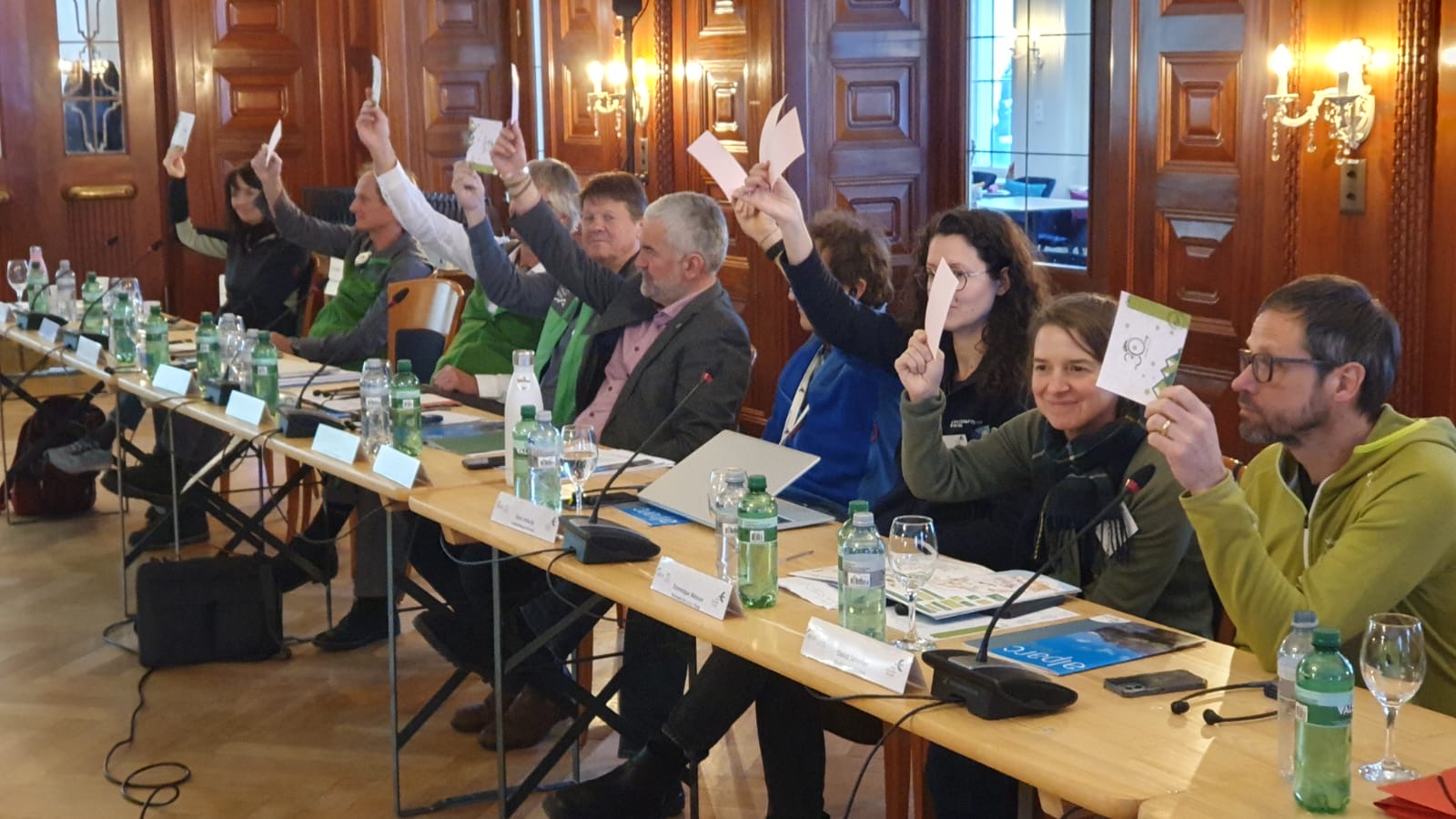

The Trophy
Saturday was dedicated to the exciting Danilo Re Trophy competition, in which 48 teams competed in four disciplines: ski mountaineering, giant slalom, cross-country skiing and shooting. Blessed with excellent weather and the warm hospitality of the Swiss National Park, the day was a celebration of sportsmanship and Alpine culture. The evening culminated in a gala dinner in a spectacular high-altitude venue. The festive atmosphere was enhanced by the various award ceremonies for the winning athletes and parks, live music and dancing.
We congratulate the overall winner of the sports competitions: Aree Protette delle Alpi Marittime!
To see all of the individual and team rankings of the competition, click here.
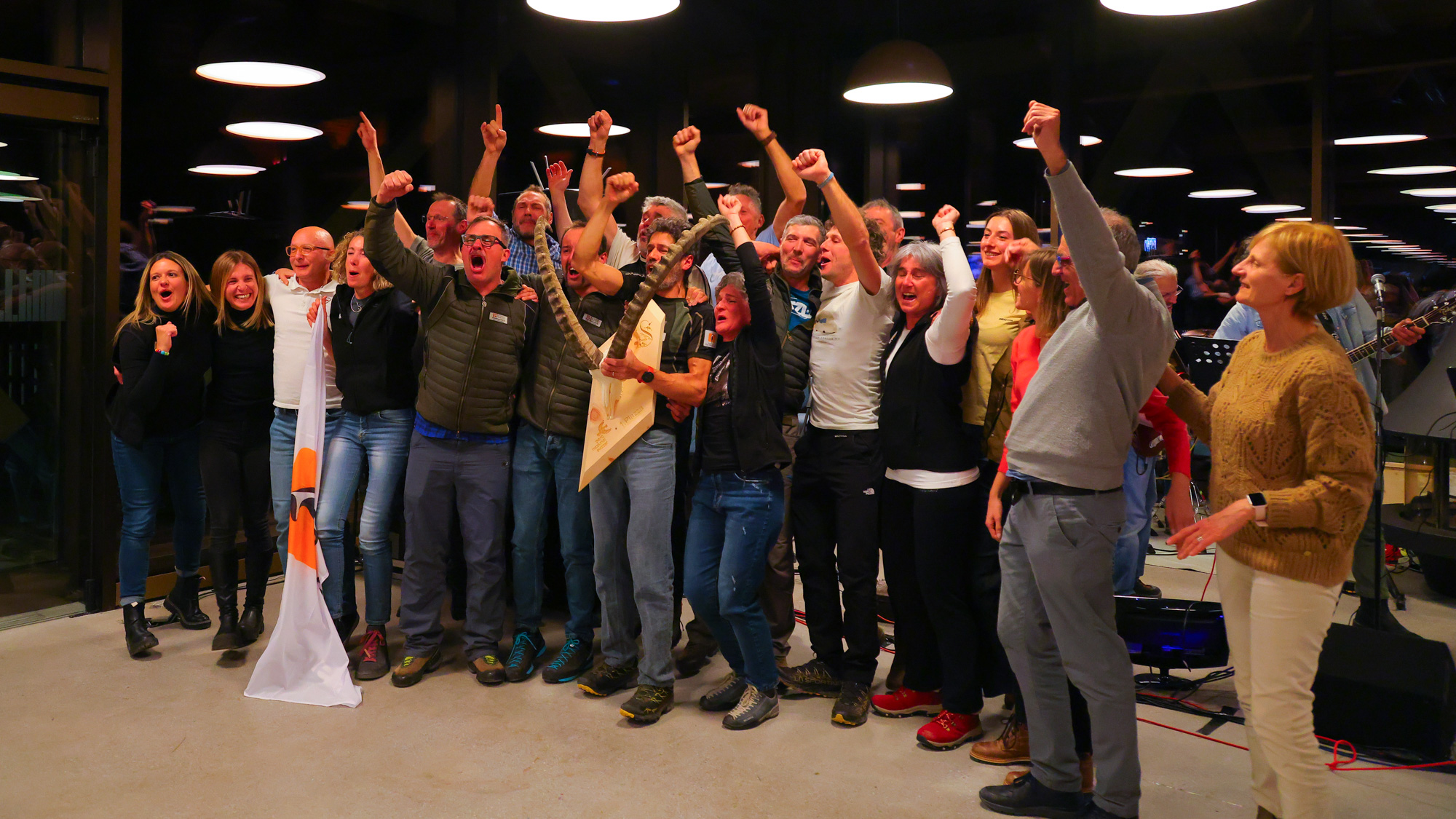
At the end of the event, the trophy flag was ceremoniously handed over by the Swiss National Park (CH) to the Triglav National Park (SI), host of the 2026 edition. The entire community looks forward to another successful gathering next year, continuing the valuable heritage of the Danilo Re Memorial.
More information about the events as well as a photo gallery of our colleagues from the Swiss National Park are available on the Danilo Re Website.
Photo 1 & 4: ©Parc Naziunal Svizzer -Fadri Wehrli
Photo 2 & 3: ©ALPARC - Guido Plassmann



The 29th edition of the Memorial Danilo Re will be hosted by the Swiss National Park and takes place from January 16th to January 19th 2025.
For many years now, the annual Memorial Danilo Re provides a major opportunity for all those working in Alpine Protected Areas to get acquainted with one another, in particular those in the field, carrying out surveillance, facilitation and fact-finding missions. The event comprises a sports competition (known as “The Danilo Re Trophy”), a theme-based seminar and a range of other activities for all participants to enjoy together.
The 2024 edition, focused on the theme "Alpine Flowers and Pollinator Insects", brought together young people in several protected areas and natural sites across the Alps and Carpathians, where they explored the beauty of nature while sharing a physical, cultural, and artistic journey in the mountains. Watch the highlights of the 2024 edition here
See our YAT website to read more.
ALPARC's 2024 activity report has been released. The document is available in all 4 Alpine languages and presents the work of the association for the past 12 months. ALPARC's main fields of work are covered, from Biodiversity & Ecological Connectivy, to Education for Sustainable Development and Regional Development & Quality of Life. The report also presents the main news from the network and the latest update of the Alpine Protected Area map.
ALPARC is grateful for a successful year 2024, entering 2025 with two new members: The National Park Val Grande (IT) and the Nature Park Val Calanca (CH).
The ecological integrity of the Val Grande has always been preserved by the steep and rocky mountains that surround it. In 1967, the area of the Pedum massif was declared an integral nature reserve, the first in the Italian Alps. Later, the state acquired a large part of the Val Grande area, while the 'Carabinieri' of the parks were responsible for its management and supervision. The national park was established in the 1980s thanks to the initiative of the local authorities, the commitment of the Piedmont Region and the Ministry of the Environment. Located in the province of Verbano-Cusio-Ossola in Piedmont, the park, which was officially established in 1992 and expanded in 1998 and 2023, now covers an area of 170 km².
The park is home to the largest wilderness area in Italy, making it an important agent in the conservation of the natural wealth of the Alps.
With an area of 139 km², the Val Calanca is the least densely populated nature park in Switzerland and the only one in the Italian-speaking region. It is located in the canton of Graubünden, well protected by high mountain ranges and far away from transit traffic. The valley stretches from the valley floor at 502 m above sea level to the summit of the Puntone dei Fraciòn at 3,202 m above sea level. These enormous differences in altitude in a small area create an extraordinarily diverse flora and fauna as well as valuable biotopes. There are several floodplains along the Calancasa river that are included in the inventory of amphibian spawning grounds of national importance. Other features of the nature park are its wild, intact nature, traditional settlements made of stone and wood, well-preserved mule tracks, architecture and art from several centuries and excellent local products.
We are delighted to welcome these parks to the Alpine Network of Protected Areas and look forward to a successful cooperation in the years to come! With the addition of these two parks, ALPARC now counts a total of 54 members representing 64 Alpine protected areas working together for the preservation of the Alps.
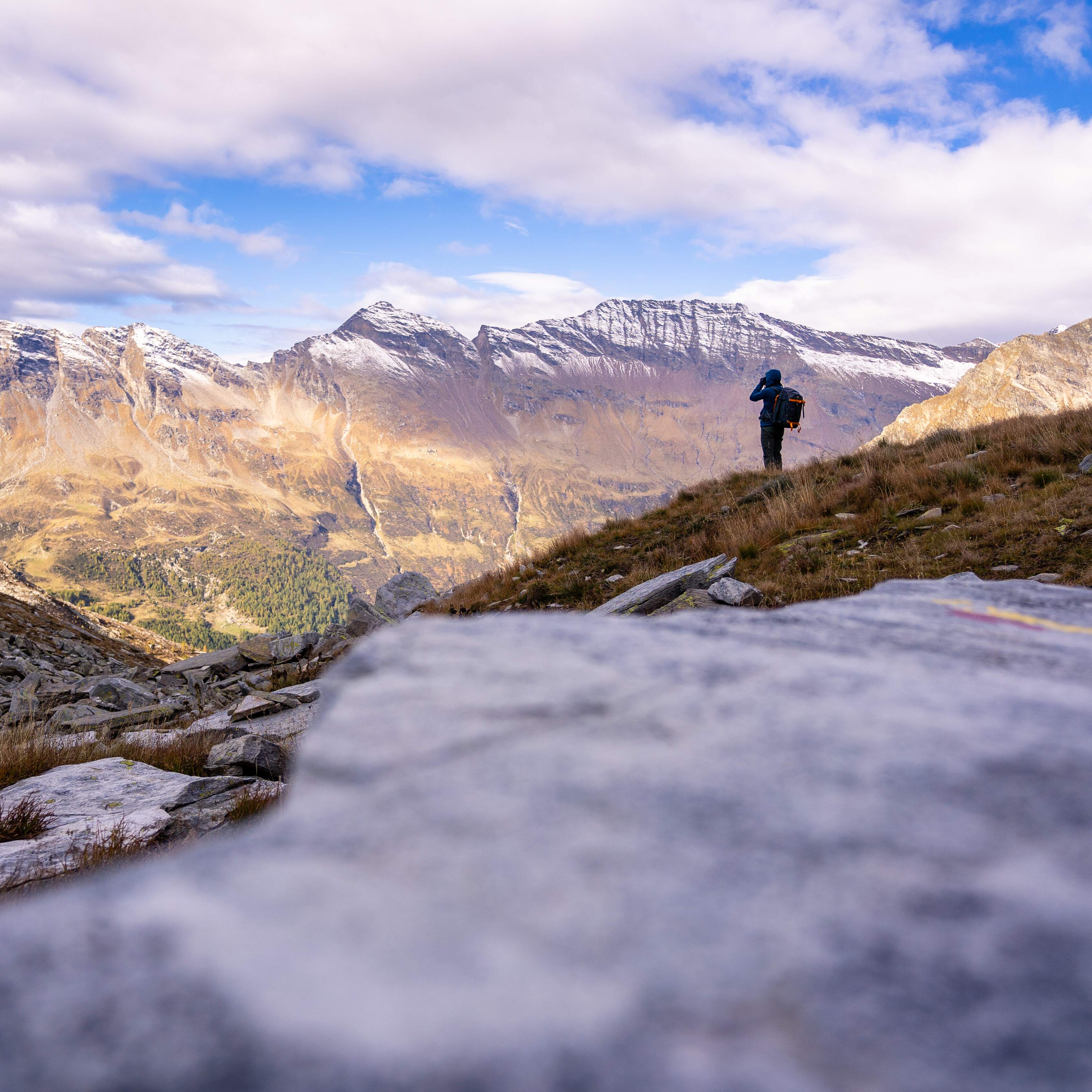
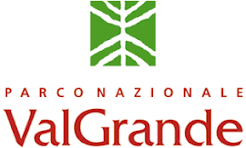

Photo 1: National Park Val Grande ©Nicola Fedeli
Photo 2: Nature Park Val Calanca ©parcovalcalanca
The Reading Mountains Festival is a way to connect people who love books and mountains, even if they are physically apart. Book lovers and authors, mountaineers and artists throughout the Alps (and beyond) have a chance to discuss similar issues and evaluate the meaning, impact, and purpose of Alpine literature.
"Reading Mountains" was first launched to celebrate International Mountain Day in 2015. The idea is to initiate events dedicated to mountains and literature in various places around the Alps on International Mountain Day, declared by the United Nations and celebrated on 11 December every year.
The Reading Mountains Festival encourages the celebration of cultural differences and similarities in the Alps and, at the same time, connects mountains and culture. Partners organising various events in the scope of the festival are provided with posters, bookmarks, and stickers that they can use for the promotion of their event(s).
If you have any questions, please contact reading.mountains@alpconv.org.
The 38th edition of the Sondrio Festival (IT) will take place from 15th to 24th November 2024, in Sondrio, Italy!
Click here for more information.
The ALPARC Permanent Working Group on Environmental Education and Communication organized a two-day workshop on October 10-11, hosted by the Adamello Brenta Natural Park at the stunning Palazzo Lodron Bertelli in Caderzone Terme, Italy. The aim of the workshop was to promote exchanges between staff from different Alpine Protected Areas working in the diverse field of environmental education.
The event started on Thursday morning with a planned excursion to the Nature Park. Unfortunately, due to bad weather conditions, the planned hike was cancelled and replaced by a (wet) walk past waterfalls to one of the park's visitor centres. Nevertheless, this proved to be an ideal introduction to the workshop, as the Adamello Brenta staff took the opportunity to present their own educational activities to the participants.
In the thematic sessions that followed, participants shared their park activities and best practices. One key discussion was the use of new technologies in environmental education. The UNESCO Dolomites Foundation presented its Geotrail online tool, while the Adamello Brenta Park demonstrated their virtual reality headsets used in their project "parks without borders", which participants were able to experience firsthand.
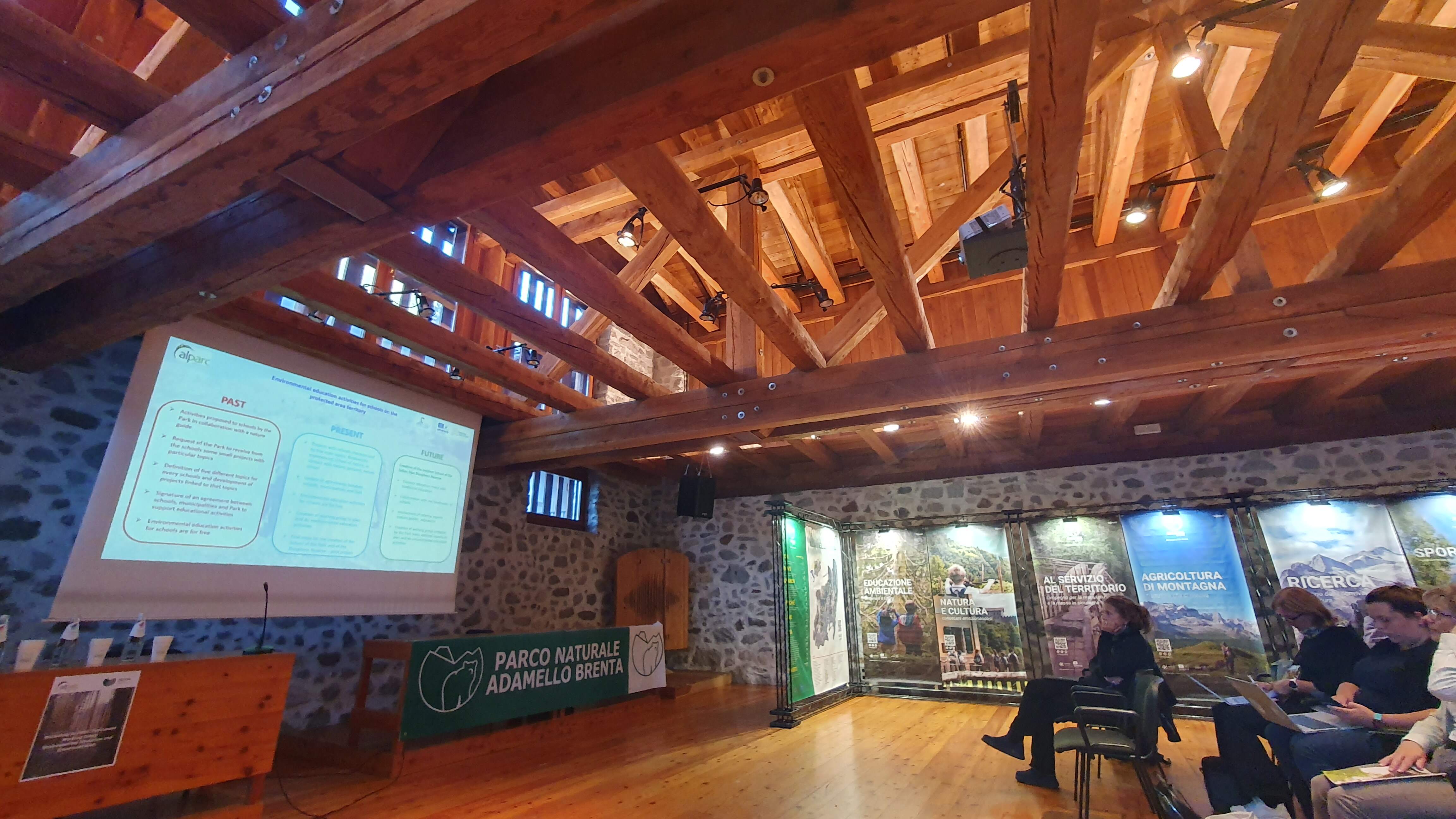
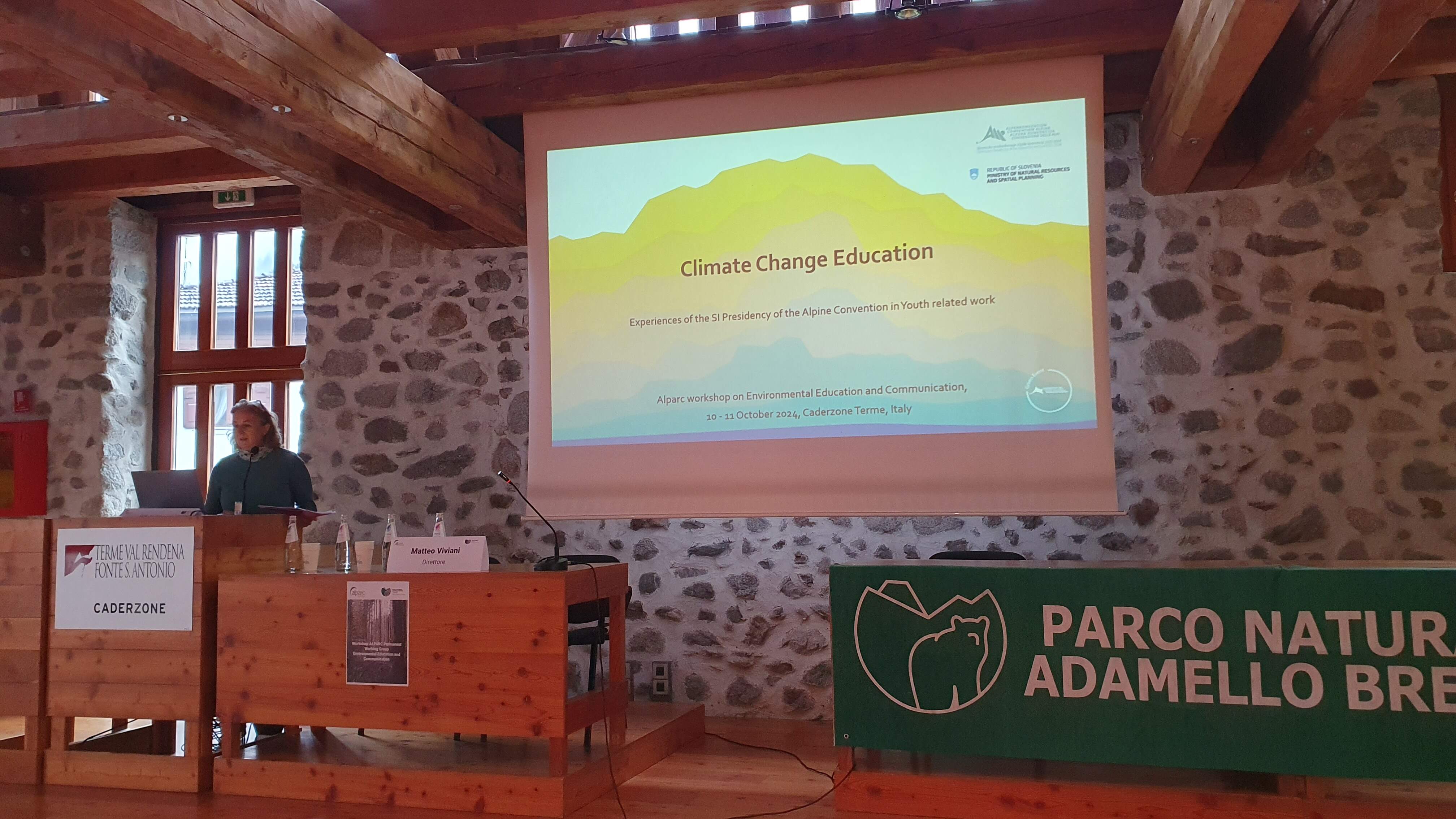
A major difficulty that was highlighted is the engagement of teenagers in park initiatives. Some participants reported specific activities tailored to this age group (e.g., the Capricorn Club in Nature Park Beverin), as well as the establishment of youth councils (e.g. in the Nature Park Orobie Valtellinesi) and junior ranger programs (e.g., in the Nature Park Prealpi Giulie) to address this challenge. Participants agreed that it is promising to also work with teachers in order to help them integrate environmental topics into their educational strategies. The Adamello Brenta Natural Park, for example, already organizes annual seminars for teachers.A key takeaway from the workshop was the importance of continuing to engage young people in environmental initiatives, as we need to see it as an investment in our future.
Also, all participants were open to the idea of participating in future joint projects (e.g., an Alpine Space project), possibly focussing on the adoption and revision of the criteria of the Alpine School Model.
This workshop was co-organized by ALPARC and the Adamello Brenta Natural Park.
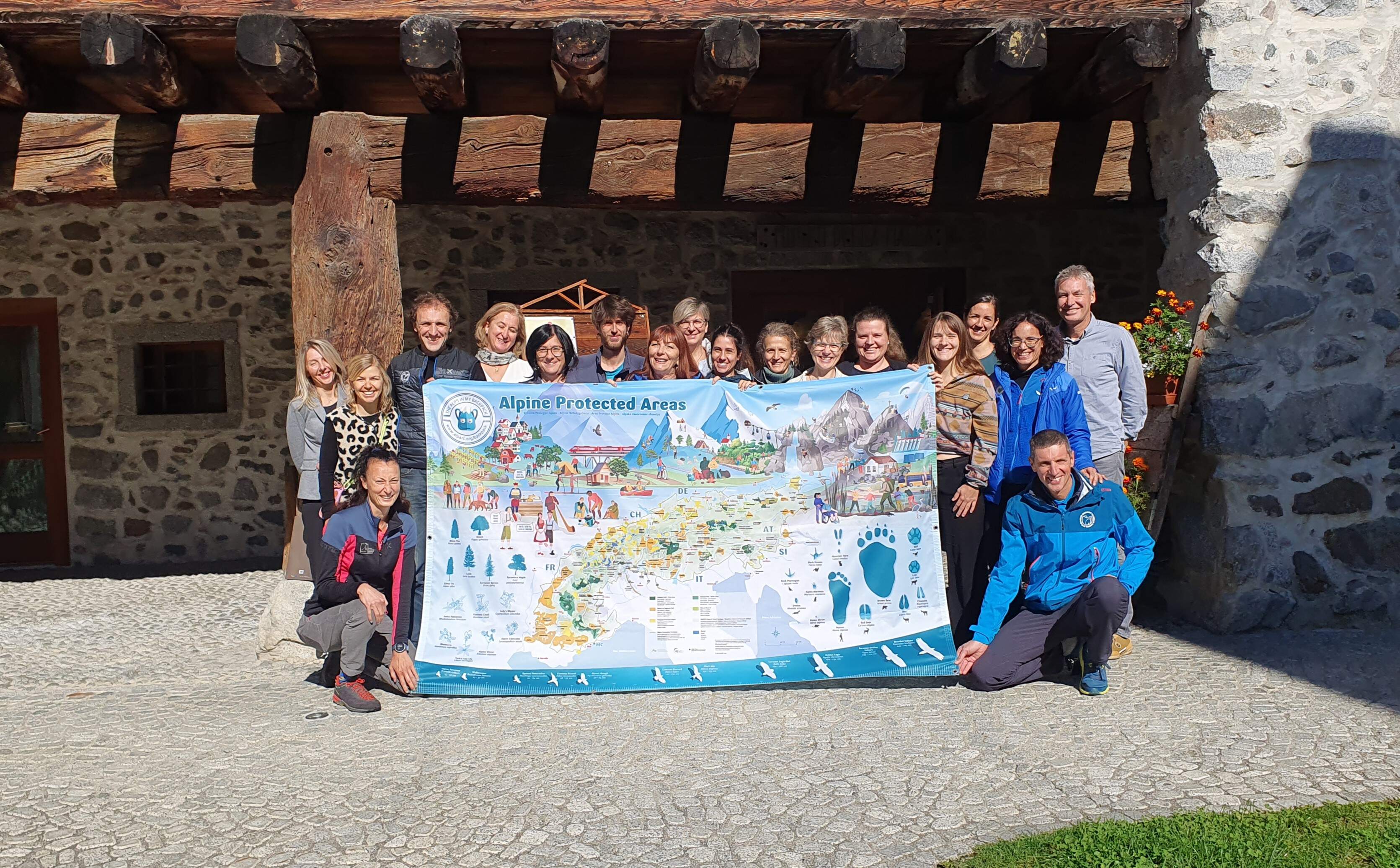
© Photos: Guido Plassman / ALPARC

Biodiversity conservation for generations to come
The decisive and desired result of the project is to map a path toward a more efficient and coordinated protected area policy throughout the Alps. The results of the individual chapters are intended to provide technical support for this process and to highlight particular perspectives.
Specifically, the project is intended to contribute to:
a) harmonising the management and measures of the existing protected areas more internationally in the sense of an Alpine-wide protection of biodiversity and
b) to define new forms of protected area where necessary and meaningful. The involvement of the local population in a new protected area policy with horizon 2030 is essential.
Long-term effects are the implementation of an Alpine-wide coordinated protected area policy and an increasingly up-to-date adaptation of protected area management and the types of protected areas as well as their protection status with regard to informed and responsible nature conservation.